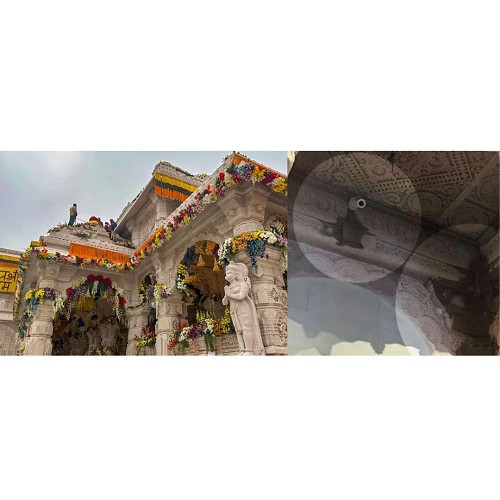
LCI’s Eyes: Examining Legalities of this case
#LAWyersClub_POV
By- Ifrah Murtaza, BA LLB student
IN A NUTSHELL
The newly constructed Ram Temple in Ayodhya, heralded as an architectural marvel, has encountered an unforeseen problem. Reports indicate that the temple’s roof has developed leaks shortly after its completion amidst fanfare. Built under the supervision of the Shri Ram Janmabhoomi Teerth Kshetra Trust, this issue has raised concerns about the construction quality and engineering oversight. The leaks have prompted scrutiny and a response from the trust, which has assured the public of immediate rectification measures to uphold the sanctity and structural integrity of the revered site.
FINANCIAL IMPLICATIONS CAUSED BY THE LEAK
The Construction of the Ram Mandir was primarily funded through voluntary donations from the public. The Shri Ram Janmabhoomi Teerth Kshetra Trust, formed by the central government, supervised the collection of funds from millions of devotees across India and abroad.
Apart from that, various organizations, individuals, and businesses had also made substantial donations towards the construction of the temple, including prominent figures like Morari Bapu, Govindbhai Dhoklakia, Mahavir Mandir Trust, etc.
Donations to the Ram Temple Trust were exempted from Section 80G of the Income Tax Act, for the fiscal year 2020-2021, incentivizing increased contributions from supporters.
WHAT ARE THE PUBLIC RAMIFICATIONS?
- Undermines confidence in engineering standards and construction quality.
- Diminishes the symbolic significance of the emotional and spiritual connection people have with the Temple.
- Prompts questions about management of funds and resources as donors expect transparency in the utilization of their contributions.
- Underscores the need for stringent quality control and highlights the significance of effective oversight in public infrastructure projects.
PARALLELS WITH THE BIHAR BRIDGE COLLAPSES
Recently, multiple bridge collapses, including the one in Kishanganj were witnessed in Bihar. Similar to the Temple roof leak, it indicates significant flaws in construction and upkeep of infrastructure projects.
The deficiencies raise questions about the engineering and architectural design employed in construction of such large-scale projects.
They suggest systematic issues with oversight and accountability within the agencies responsible for ensuring quality and durability of the public projects.
It implies that the funds for these infrastructure projects may not have been utilized effectively, leading to substandard construction and inevitable need for additional expenditures on repairs and reconstruction.
LEGAL REMEDIES AVAILABLE FOR THE PUBLIC AND DONORS
- Public Information Litigation (PIL): A PIL can be filed by the aggrieved before the court to demand investigation into the misuse of funds and quality of construction.
- Right to Information Act (RTI): RTI can be invoked to obtain details of the tendering processes, quality checks, and utilization of funds for the project to reveal any wrong doings.
- Comptroller and Auditor General Audit (CAG): Public can request the CAG to conduct a performance audit of the project to analyze whether the funds collected were being utilized efficiently.
- Consumer Court: Large donors can approach consumer courts to claim deficiency in services if the construction quality is subpar.
- Central Vigilance Commission (CVC): If suspicions related to corruption or misappropriation of funds arise, CVC may investigate and take appropriate action upon filing a complaint.
- Departmental Inquiry and Disciplinary Action: a departmental inquiry can be requested to determine the cause to construction failures and the ones responsible for the same would face disciplinary action by the authorities.
Despite being a revered project funded by substantial public donations and celebrated as an architectural marvel, the roof leak in the newly constructed Ayodhya Ram Temple sheds light on the critical lapses in construction quality and oversight. This issue mirrors the recent infrastructural failures like the bridge collapses in Bihar, both highlighting urgent need for rigorous construction standards and accountability. The public donors who have displayed immense faith and support, possess several legal avenues to pursue justice and ensure transparency. Resolving these issues is not crucial for preserving public confidence but also for safeguarding the sanctity and integrity of the such cherished undertakings.
Join LAWyersClubIndia's network for daily News Updates, Judgment Summaries, Articles, Forum Threads, Online Law Courses, and MUCH MORE!!"











